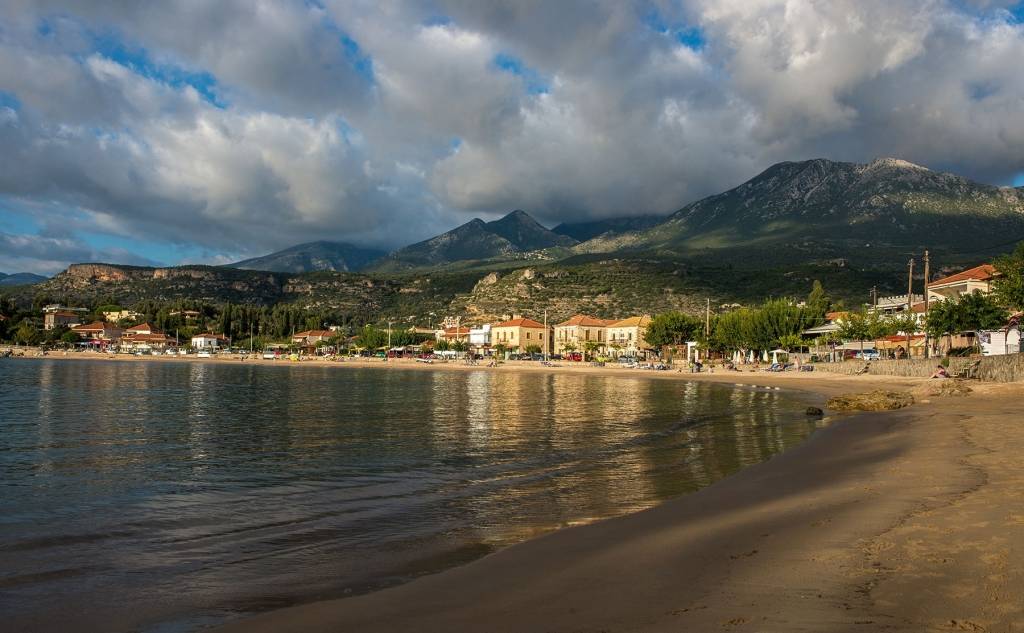





The seaside village of Stoupa is 45 km from Kalamata. It is built at the foothills of Taygetos in an area overgrown with olive groves behind two sandy coves. With an excellent tourist infrastructure, it is today one of the most developed villages in the prefecture of Messenia.
Stoupa is a newly built village, and its first inhabitants came from the small village of Lefktro, which is located very close. The village’s first name was Potamos, from the river Drakos or Drakolagado, which crossed it. It was later renamed Stoupa. There are two versions of the current name. According to the first, the name comes from the Arabic word "stupa", which means "beach" or "sea". In the second version, the name comes from the tow-fibres of flax.
Stoupa, which has also been named the "fairy of Messenia" thanks to its unique natural landscape, is world-famous for its two beaches: the beach of Stoupa (right in front of the settlement) and the beach of Kalogria. The shallow, sandy, and organised beaches with crystal clear waters attract visitors worldwide. Characteristic is the rock called Stoupa and a set of reefs known as "the river’s reefs". Paths starting from Stoupa lead walkers to traditional villages of the Messinian Mani. At the same time, an excursion boat transports visitors from the port of Stoupa to Kitries or Pyrgos Diros in Laconia.
Nikos Kazantzakis and Alexis Zorbas lived in Stoupa. They both worked in the now-abandoned lignite mines of Prastova in Neo Proastio, where they met. Here, Nikos Kazantzakis was inspired and wrote, in 1917, the unique masterpiece "The Life of Alexis Zorbas".